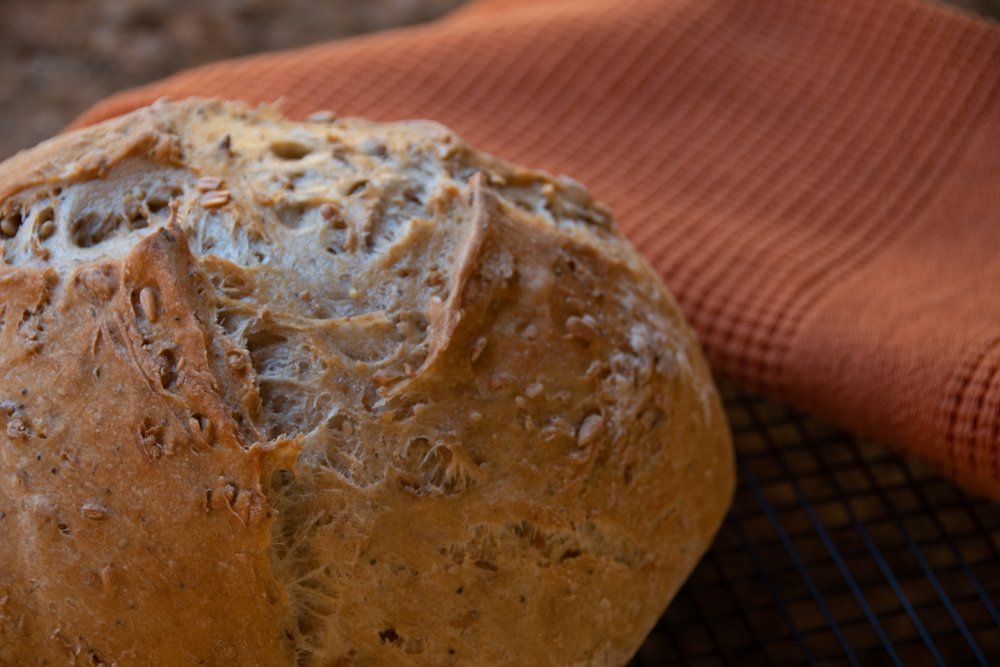Lessons in Baking
I am a baker. Bread making has been an activity I have done throughout most of my adult life; maybe it is in my blood as two of my great grandfathers were professional bakers.
I started making sweet doughs when I was still in high school. Back then, yeast came in small envelopes and the sweet dough that I would mix was one requiring overnight refrigeration. Now I buy yeast in bulk and, depending on the type of bread I’m working on, the finished product is out of the oven and on a cooling rack in about three hours, sometimes longer.
As a young married woman, my mother-in-law gifted me a bread mixing bucket, a tool she would use each week to bake her own bread for the family. Each Saturday, I would clamp the bucket onto a kitchen chair, add the flour, sugar, salt, yeast and water, and turn out 4 loves of bread. My go-to recipe came from Edward Espe Brown’s Tassajara Bread Book and consumed an entire day. But oh, when the loaves were finally out of the oven - usually around dinner time - the aroma was intoxicating. Usually we found some excuse to eat a significant portion of one of the warm loaves.
Our lives, however, got busy. Being an educator meant I had less time to spend pursuing baking; however, I did occasionally bake from scratch, and at one point used an electric bread maker. Once in a while I’d get myself together enough to start Jim Lahey’s No Knead Bread Recipe. Mainly our lives were hectic, and we bought bread.
Flash forward to 2020 when COVID made in-person food shopping difficult and supplies of items chaotic. Isolation forced me to rethink how and what we were buying for groceries. Sometimes we could buy store bread; sometimes, we could not. I thought that if I could find flour and other basic elements, I could bake bread. I wasn’t alone in that idea, however. So many people were perfecting sourdough bread recipes that even flour was in short supply.
But a return to bread-baking is what I was able to do, and I continue to bake bread several times each week even now. The bread style, the type of bread may change slightly, but the basic ingredients - yeast, sugar, salt, butter and flour - are always constant. As is the time and patience needed.
Feeling dough beneath my palms is gratifying, and I have realized, often through experience, that there are no shortcuts when it comes to bread-making. The dough must be kneaded until it tells you it is the right elasticity. The dough needs to rise, twice, allowing yeast to do its magic. Shortchanging the time required for a decent rise only makes for a less-than-stellar loaf. The dough has to bake fully, reaching a good internal temperature, something I gauge by thumping the bottom of the loaf.
All the steps take the time they need; they cannot be hurried.
The lessons of breadmaking are also reflected in our precautions in avoiding COVID. We’ve had to exercise patience and caution while we waited, first for our own vaccinations, and then for vaccine protection to be offered to our young granddaughter. To me, there is an undeniable connection between the patience I’ve been practicing with bread-making and the slow and deliberate release of COVID precautions.
Likely there are those around me who may find this slow, cautious, approach strange and even off-putting. But the lesson of bread making has, over time, taught me that nothing is gained by rushing.
